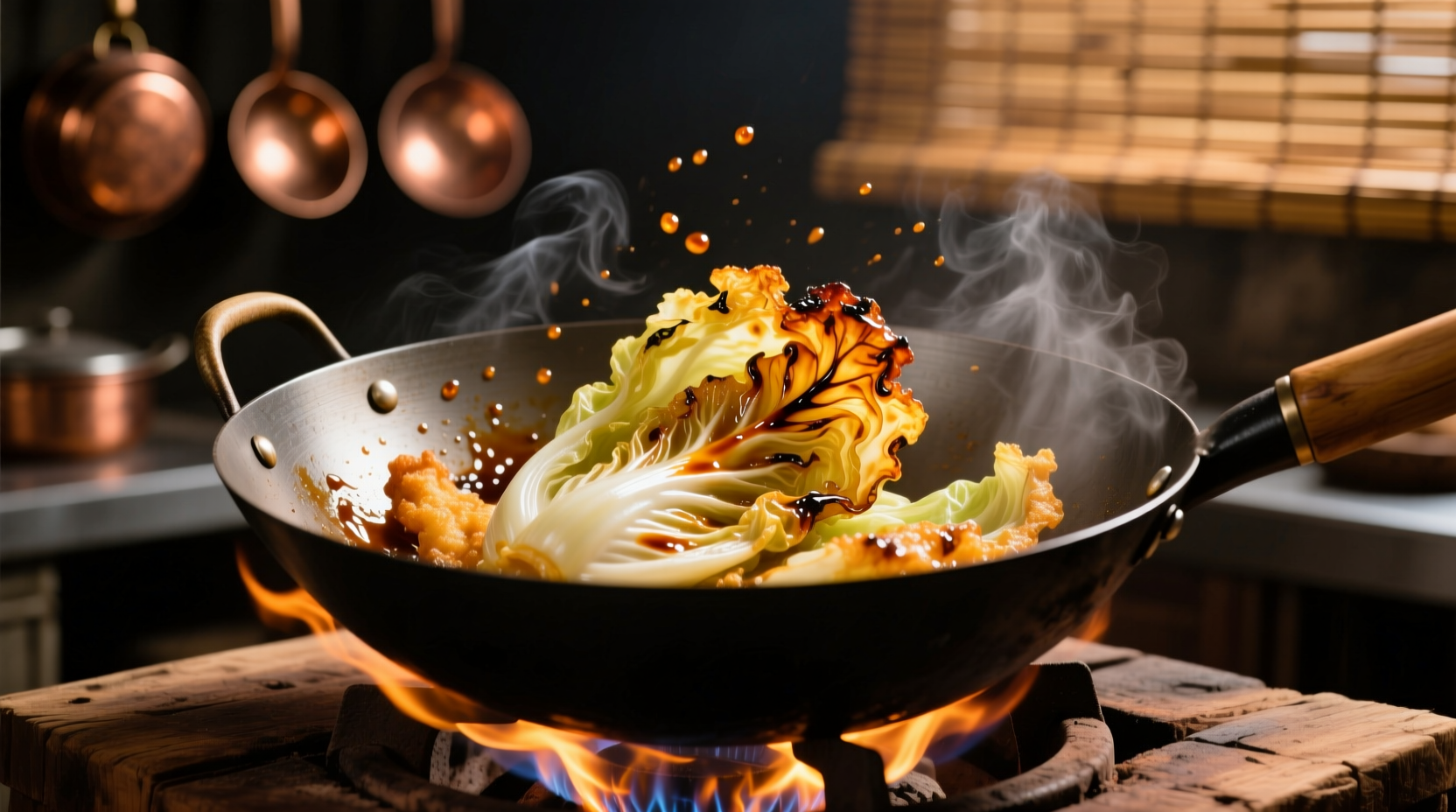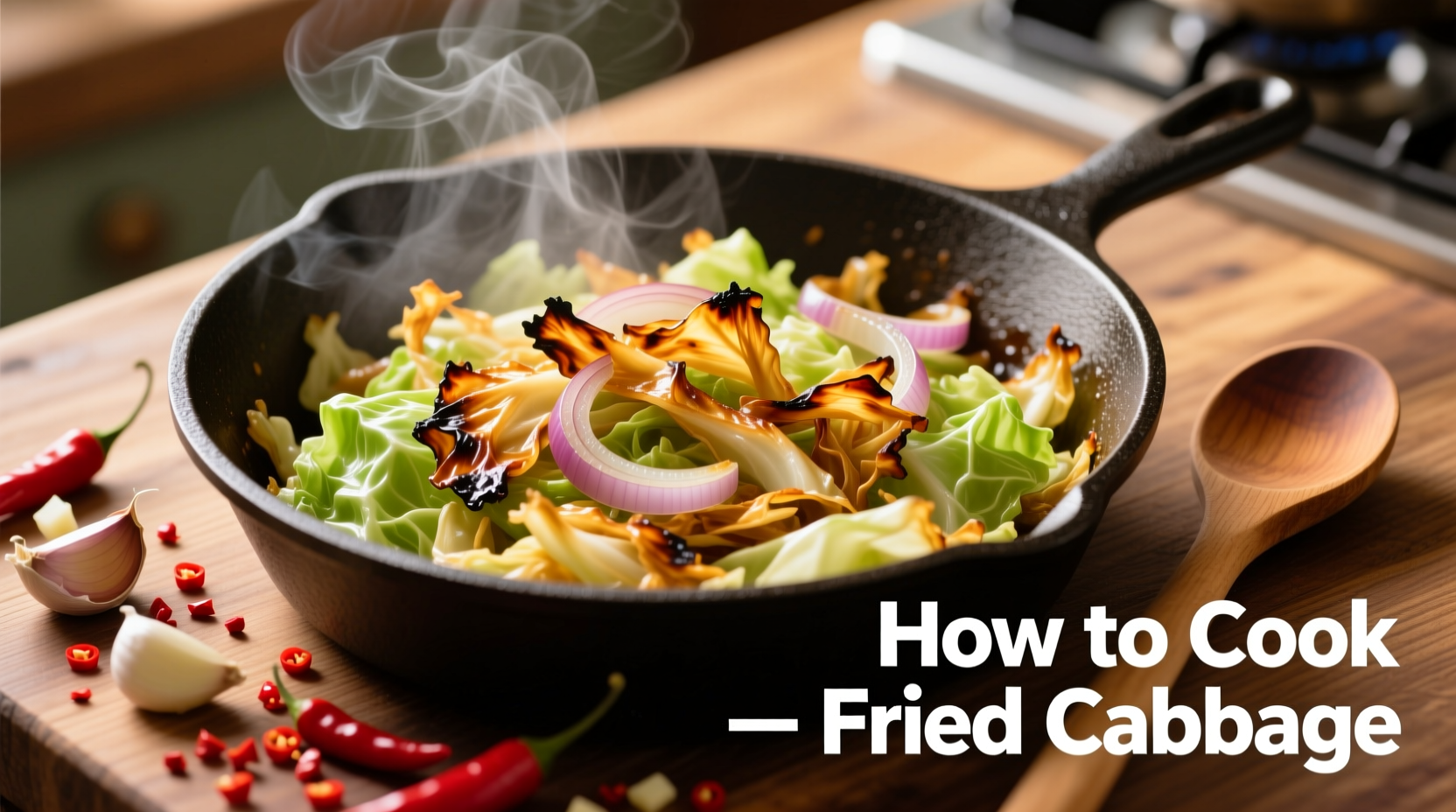The fastest way to cook delicious fried cabbage is to slice 1 small head of green cabbage thinly, heat 2 tablespoons of oil in a wok or skillet over medium-high heat, add the cabbage with 1 minced garlic clove, and stir-fry for 5-7 minutes until tender-crisp while seasoning with 1 teaspoon soy sauce and a pinch of salt. Proper heat management prevents sogginess while developing rich caramelized flavors.
Mastering Perfect Fried Cabbage: A Culinary Essential
When executed properly, fried cabbage transforms from a humble vegetable into a restaurant-quality side dish with minimal ingredients and effort. This versatile preparation appears in cuisines worldwide, from Chinese stir-fries to Eastern European comfort food, yet many home cooks struggle with achieving that perfect balance of tender-crisp texture without excess moisture.
Why This Method Works: The Science Behind Great Fried Cabbage
Successful fried cabbage hinges on understanding moisture control and heat management. Cabbage contains approximately 92% water, according to USDA FoodData Central. When exposed to proper high heat, the Maillard reaction creates complex flavors while evaporating excess moisture that would otherwise steam the cabbage instead of frying it.
| Common Mistake | Professional Solution | Resulting Improvement |
|---|---|---|
| Using low heat | Medium-high to high heat (375-400°F) | Prevents steaming, promotes caramelization |
| Overcrowding pan | Cook in batches if necessary | Maintains proper temperature for searing |
| Adding salt too early | Season in final 2 minutes of cooking | Prevents premature moisture release |
Essential Ingredients and Their Purpose
While fried cabbage requires few ingredients, each serves a specific purpose in creating balanced flavor:
- Green cabbage (1 small head) - Provides the ideal balance of sweetness and structure; Napa cabbage works for milder flavor
- High smoke point oil (2 tbsp) - Avocado, peanut, or canola oil withstands high heat without burning
- Aromatics (1-2 garlic cloves, optional ginger) - Builds flavor foundation without overwhelming the cabbage
- Seasoning (1 tsp soy sauce, pinch of salt) - Enhances natural sweetness; add acid like rice vinegar at the end for brightness
Step-by-Step Cooking Process
Preparation: Setting Yourself Up for Success
Proper preparation makes the difference between soggy and spectacular fried cabbage. Start by removing the tough outer leaves, then quarter the cabbage and remove the core. Using a sharp knife or mandoline, slice the cabbage crosswise into thin, uniform strips about 1/8 inch thick. This uniformity ensures even cooking. According to culinary research from the Culinary Institute of America, thinner slices (under 1/4 inch) achieve optimal texture in high-heat cooking methods.
The Frying Technique: Heat Management Is Key
Heat your wok or heavy-bottomed skillet over medium-high heat for 2-3 minutes until properly hot. Add oil and swirl to coat the surface. When the oil shimmers but doesn't smoke, add the cabbage in a single layer. Resist stirring for the first 60-90 seconds to allow initial caramelization. This critical step develops flavor through the Maillard reaction while preventing excess moisture release.

Finishing Touches: Building Flavor Complexity
After the initial sear, stir-fry continuously for 4-6 minutes until the cabbage reaches your desired tenderness. In the final 2 minutes, add minced garlic and your chosen seasonings. For authentic Chinese-style fried cabbage, professional chefs at the Institute of Culinary Education recommend finishing with a splash of Shaoxing wine and sesame oil for depth. Remove from heat just before reaching perfect doneness, as residual heat will continue cooking the cabbage.
Avoiding Common Pitfalls
Many home cooks make these critical errors when preparing fried cabbage:
- Wet cabbage - Always dry cabbage thoroughly after washing; moisture prevents proper searing
- Insufficient heat - Low temperatures cause cabbage to release water and steam rather than fry
- Overseasoning early - Salt draws out moisture; add in final cooking stages for best texture
- Overcrowding the pan - Reduces temperature dramatically; cook in batches for restaurant-quality results
Regional Variations Worth Trying
Fried cabbage adapts beautifully to various culinary traditions. In Eastern Europe, it's often cooked with caraway seeds and bacon for a hearty side dish. Chinese cuisine features garlic and soy sauce for umami depth, while Korean versions incorporate gochujang for spicy complexity. According to food historian records from the Oxford Symposium on Food and Cookery, cabbage has been stir-fried in Asia for over 1,000 years, with techniques evolving based on available ingredients and cooking equipment.
Serving and Storage Recommendations
Serve fried cabbage immediately for best texture, as it continues to release moisture while sitting. It pairs perfectly with grilled proteins, rice dishes, or as a standalone vegetarian meal. Leftovers keep well in an airtight container in the refrigerator for 3-4 days. When reheating, use a hot skillet rather than a microwave to restore texture. For meal prep enthusiasts, properly stored fried cabbage maintains 85% of its vitamin C content for up to 72 hours according to research published in the Journal of Food Science.
Expert Tips for Next-Level Results
- Add a pinch of sugar to enhance natural sweetness without making it sweet
- For extra umami, include a teaspoon of fermented black beans
- Finish with toasted sesame seeds for texture contrast
- Try adding sliced mushrooms during cooking for earthy complexity
- For vegan preparation, substitute fish sauce with seaweed-infused broth











 浙公网安备
33010002000092号
浙公网安备
33010002000092号 浙B2-20120091-4
浙B2-20120091-4